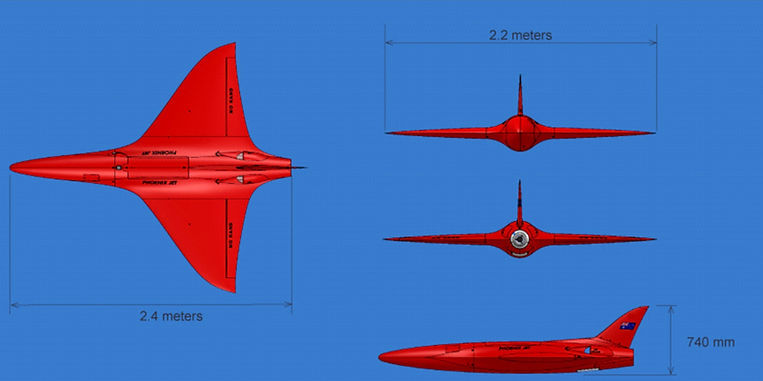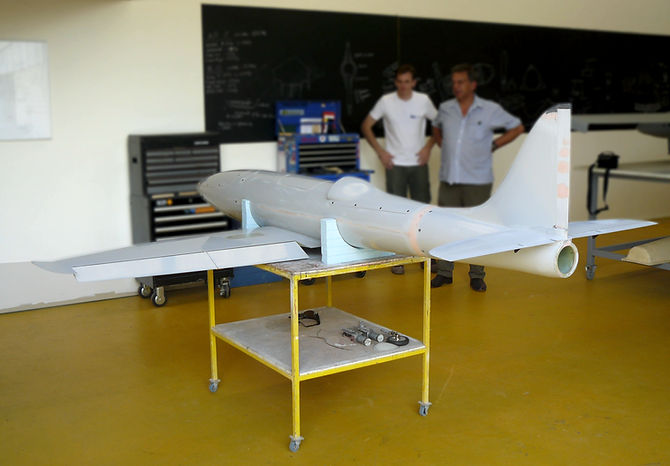
DRONE TECHNOLOGY
Orex Research has a number of drones that range from high speed, fixed wing, multipurpose drones to single to multi-rotor drones. They can be configured for reconnaissance and surveillance to active payload systems. They are easily configured for different tasks.
HEAVY LIFT MULT-ROTOR VTOL
Description
Developed for the use in precision spray application of crop treatments and developed multi-spectral imagery systems to increase crop yields and minimise chemical use. The aircraft is capable of fully autonomous operation and with a payload of 18kg is idea for use in precision pesticide and chemical spraying, With a loiter time of in excess of 45 minutes (reduced payload) and autonomous flight, it is ideally suited to the task of livestock monitoring and herding.
Capability / Features
Name:
Type:
Propulsion:
Launch:
Capability/Mission:
Range:
Loiter Time:
Payload:
Recovery Options:
AgRotor
Heavy lift, multi-rotor
Electric
VTOL
Fully Autonomous Functionality, Precision Pesticide and Chemical Spraying, Livestock Herding
20-45 minutes
18kg
RTB

UNMANNED LONG ENDURANCE
Description
CyberEye provide target Identification utilising Multi-spectrum Imagery. The capability that it can provide, with a variety of imaging and sensor platforms retrofitted, makes it the ideal surveillance and close monitoring UAV. It has range and loiter times commensurate with this type of activity and can perform autonomously over the horizon in a verity of threat scenarios.
Capability / Features
Name:
Type:
Propulsion:
Launch:
Capability/Mission:
Range:
Loiter Time:
Payload:
Recovery Options:
CyberEye
Fixed Wing
Jet Turbine
Runway
Persistent observation
200Km
240 minutes
18Kg
RTB

MULTI-SPECTRAL IMAGING PLATFORM
Description
This drone was fitted with multi-spectral imagery systems to detect sharks at depths of 10 metres or more. It is a small, simple to operate UAV with a significant loiter time ideal for detailed, close in perimeter and local area surveillance. Because of the ability to retrofit different imaging systems, it is extremely versatile for surveillance activities.
Capability / Features
Name:
Type:
Propulsion:
Launch:
Capability/Mission:
Range:
Loiter Time:
Payload:
Recovery Options:
SharkAlert
Fixed Wing
Electric
Rail
Monitoring, surveillance and tracking
5Km
60 minutes
N/A
RTB

MAINTENANCE MONITORING & FAULT FINDING
Description
These UAS were developed for use by the Chinese National Power Grid Company. These were used to monitor maintenance activities over the total network. In addition, monitoring activities were used with sophisticated algorithms to provide predictive fault finding. Neither of these two activities could have been successfully completed without the use of this state of the art drone technology.
Capability / Features
Name:
Type:
Propulsion:
Launch:
Capability/Mission:
Range:
Loiter Time:
Payload:
Recovery Options:
CyberCopter/PowerVision
Single Rotor
Reciprocating Piston Engine
VTOL
Maintenance monitoring
80Km
150 minutes
4Kg
RTB

JET TURBINE MEDIUM SURVEILLANCE
Description
Development of Jet turbine-powered medium surveillance aircraft. This aircraft is used as a high-speed target for air to air missile and ground to air missile training. It is currently in use by the Australian Defence Force (ADF). The aircraft provides near supersonic performance for realistic arial threat scenarios. Its relatively low cost, for the capability available, provides for an economic means of missile and gunnery training.
Capability / Features
Name:
Type:
Propulsion:
Launch:
Capability/Mission:
Range:
Loiter Time:
Payload:
Recovery Options:
Phoenix
Fixed Wing
Jet Turbine
Rail
Multi-spectrum Imaging
100Km
60 minutes
3.5Kg
Parachute

DRONE MODELS & CAPABILITIES
Orex Research has a number of drones that range from high speed, fixed wing, multipurpose drones to single and multi-rotor drones. They can be configured for reconnaissance and surveillance to active payload systems, and are easily configured for different tasks.
Phoenix
The Phoenix is a jet powered, fixed wing drone with a top speed of just under Mach 1. Its optimal cruise speed is 200 knots giving it optimal fuel consumption and range of 500 kilometres. The platform operates on Jet A1 fuel which is readily available. It can be used for reconnaissance and surveillance with extended loiter times. It can also be used to deliver a payload of 6 kg. This aircraft has been built and deployed as both a surveillance aircraft and target drone.


Specifications
The following specifications are dependant of fuel load, configuration, payload.
-
A top speed at nearly Mach 1 (1,034 km/hr)
-
Optimum cruise speed 200 kts
-
Fuel capacity of 35 litres
-
Flight time at optimal cruise speed is 120 minutes
Sample Data
At the standard burn rate, the fuel consumption is 3.6 minutes per litre. 9:35 PM gives the Phoenix a flight time of approximately 120 minutes. At full throttle, to achieve speeds of close to Mach 1, the burn rate increases to 2.2 minutes per litre.
The platform is infinitely configurable, sporting a concentric nose cone with a large volume that is easily configured. Use as an aggressor vehicle, there is a 40 minute window to acquire the target. Competitors either have a surveillance capability or an aggressor capability, but not both, in a single configuration. Phoenix can serve as an observation vehicle, with significant loiter time, and as an offensive platform.
Phoenix can be configured with stealth technology to minimise detection over hostile terrain. The nose cone can be fitted with sensors, radar capability, weapon systems or simply filled with inert ballast. Ballast must be used if there is no payload.
Upgraded Phoenix (Phoenix II)
This platform has enhanced wing and tail design providing greater lift, payload and range. It further provides enhanced stealth capabilities. Currently the British Army, RAF and RN use Meggit’s Banshee drone.
This platform significantly outperforms that drone in every configuration including fuel load, speed and payload. Meggit’s electronics and electronic warfare devices and add-ons fit directly into Phoenix II platform. There is no direct competitor that can provide the easily configured capability in one drone of this size.
CyberEye 2
The CyberEye is a piston powered, fixed wing drone with a top speed of 150 kts. Its optimal cruise speed is 100-120 knots giving it optimal fuel consumption and range of 800 kilometres. The platform operates on AvGas or Unleaded Fuel which are readily available. It can be used for reconnaissance and surveillance with extended loiter times. It can also be used to deliver a payload of 30 kg. This aircraft has been built and deployed as surveillance aircraft.

Specifications
The following specifications are dependant of fuel load, configuration, payload.
-
A top speed at nearly 150 kts
-
Optimum cruise speed 100-120 kts
-
Fuel capacity of 42 litres
-
Flight time at optimal cruise speed is 240 minutes
Sample Data
The next platform to be built is the CyberEye 3. The platform is scalable, extensible and expandable. It can carry a total, nominal payload of 80 kg. It is capable of significant loiter time providing thermal imaging, high definition day-time video and RF monitoring.
The engine sits above the wing which:
-
Shields the propellor from the ground
-
Minimises Doppler noise for stealth
-
Hides exhaust infra-red signature
CyBird
CyBird is an R&D platform based on a glider configuration with a high aspect ratio. It is designed to have significantly long loiter times of the order of 15 hours at a maximum altitude of 26k ft. It can be used for surveillance and a communications relay node for other UAVs in a network configuration.
It is currently being used to test the carrying of a variety of equipment including cameras, video systems, stealth technology and so on.

AMPs (Autonomous Marine Platform)
A fully autonomous, GPS Navigated marine vehicle. It is based on a twin hull, catamaran configuration with two inboard electric motors. It uses the same navigation system and electronic systems as the UAVs, but operates in a two dimensional space.
The platform has onboard Active Sonar and an onboard Vision Camera with full pan, left and right through 180 degrees and up and down 110 degrees. The onboard sonar is linked directly with the platforms communications system so that the results can be viewed by a controller on land. It can have an offensive capability of up to 30 kg. This can be an offensive measure or a detachable payload.
Drone Manufacturing
Currently, the fuselage and wing manufacturing of drones uses layered composite material process relying upon resins and carbon fibre. This process is manual and labour intensive, requiring numerous layers to be laid in sequence in a mould.
Orex is developing a new technique using a mould and injectable impression process. This process uses a single mould where the materials are laid over an inflatable innertube that is placed inside the mould. This innertube is inflated forcing the materials to compress into the shape of the mould.
This process will greatly reduce the cost of producing very high strength fuselage and wing structures. The composite materials are similar to the ones used in the production of the Boeing 787.









